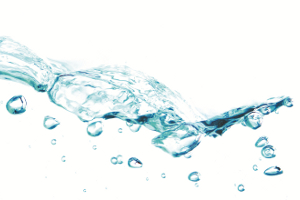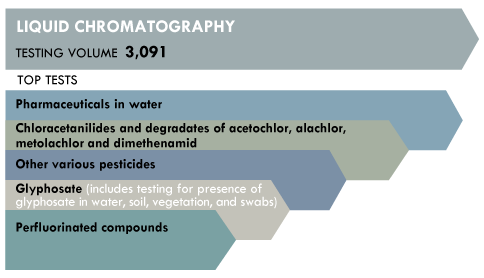DIVISION
Liquid Chromatography
The Liquid Chromatography (LC) section performs chemical analysis on samples to identify and measure organic compounds. A liquid chromatograph is a laboratory instrument that can detect very low levels of compounds that have a higher molecular weight and lower volatility than compounds traditionally detected by gas chromatography. Implementation and validation of LC methods continues to expand due to the many new chemicals and emerging environmental contaminants present in soil, water and foliage. The US Environmental Protection Agency Method 539 is used to test for hormones and steroids in drinking water. Personal care and pharmaceutical products can be found in the environment, and often require the liquid chromatograph and tandem mass spectrometer for testing.

Major achievements:
- Developed and implemented a method to determine neonicotinoid insecticides (neonics) in water for the LC section by the Hygienic Laboratory Research and Development section. This new test may be used to monitor for neonics such as imidacloprid, clothianidin and thiamethoxam in water
- Testing for personal care and pharmaceutical products increased as the Iowa Geological Survey added these tests to monthly monitoring.
